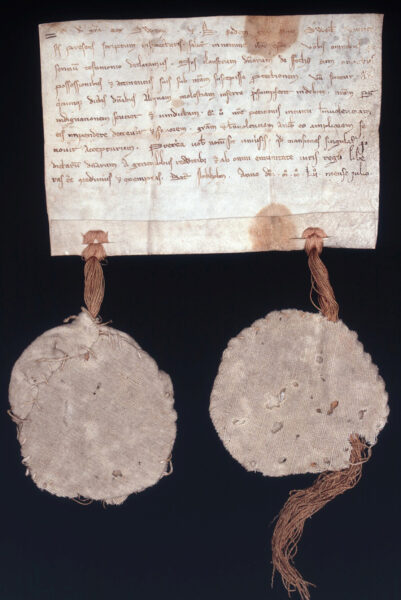Endless seals imprinted on wax! Countless pieces of parchment, neatly stacked. We tend to value these leftovers from the Middle Ages for their content: the stories written with ink, and the signs carved in the seal and rendered at the foot of a charter. Matthew Collins sees aDNA.

Recent years have made analysis of aDNA more approachable and ever more cheap. This has led to a numerous studies of ancient migratory movements of men and their horses, identifications of kinship (or lack thereof) in cemeteries, and clues to how plagues and pestilences spread.
Matthew Collins, though, is more interested in the animals, which were part of the daily life of medieval people. Did they prefer sheep, goats, pigs, or cattle? Where were these animals bred? Slaughtered? And how were they fed? And what pests did they succumb to? And when?
In the last millennium, archaeologists, had to sift tons of earth to find the minuscule splinters of the animals, which had been such a prominent part of people’s lives. Ten years ago, however, Matthew Collins had an epiphany in the musty archive of the Archbishop of York. Rows of animal skin, often very precisely dated, offered a unique opportunity to study literally millions of medieval animals. By analysing the rub off of erasers used to clean such manuscripts, he and his team has since the original European grant from 2012 been busy exploring the information, which can be gained from decoding the aDNA of calves, sheep, and goats of bygone days. Collins was not the first to think of the study of parchment. Already, in 2009, Timothy Stinson had explored the idea. But it was Collins’ team (including Stinson) secured the grant, and who got the idea to use the discarded rub offs, as source of the aDNA. In 2017, this led to the first publication, exploring the York Gospels (York Minster Ms. Add. 1).
Beeswax
Recently, Collins’ team was awarded a large grant (c. € 1.400.000) by the Carlsberg Foundation to study beeswax. The project – ArcHives – aims to study the aDNA of beeswax left as seals on documents. From where did the wax stem? Was it imported from Africa? The Baltics? What sorts of bees were domesticated? And not least: which flowers did they feed upon year on end? Will it be possible to recreate medieval gardens and meadows based on these findings?
Another dimension is the use of wax to create moulds for sculpture, gold-work, paintings etc. Is it possible to plot the aDNA of artists? Perhaps even identify which artistic works belonged to which shop?
Another avenue, to be pursued are the threats, bees are succumbing to. ArcHives will provide information on historical bee populations, their genetic makeup, the micro-biomes and parasites they hosted as well as the flowering plants they exploited for pollen and nectar. It will provide baseline data from which to help understand the modern collapse. It is currently immensely fashionable to host bee-hives in parks and gardens in the large cities. Perhaps, the project will yield information about which flowers, would be most profitable to grow in these gardens?
PRESS RELEASE
ArcHives
The Carlsberg Foundation, ”Semper Ardens” research projects
SOURCES:
Revealing the hidden biographies of the York Gospel
Press-release 26.10.2017
The York Gospels: a 1000-year biological palimpsest
By Matthew D. Teasdale , Sarah Fiddyment , Jiří Vnouček , Valeria Mattiangeli , Camilla Speller , Annelise Binois , Martin Carver , Catherine Dand , Timothy P. Newfield , Christopher C. Webb , Daniel G. Bradley , and Matthew J. Collins
Royal Society Publishing 2017
